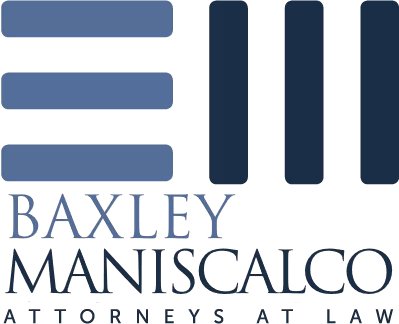
In 49 states, a driver who’s 10% at fault for an accident can still recover 90% of their damages—but not in Alabama.
Here, that same driver recovers nothing, joining thousands of accident victims each year who discover that Alabama’s contributory negligence doctrine transforms minor mistakes into complete claim denials, regardless of the other driver’s overwhelming fault.
Understanding Alabama’s Pure Contributory Negligence Rule
Alabama stands with only four other jurisdictions in maintaining pure contributory negligence, a legal doctrine that most states abandoned decades ago as too harsh.
This rule operates as an absolute bar to recovery, meaning any fault contribution—no matter how minimal—eliminates your right to compensation entirely. Understanding how this differs from other states’ systems highlights Alabama’s unique challenges.
The doctrine traces back to 19th-century English common law, when courts believed accident victims who contributed to their own harm didn’t deserve compensation.
While 45 states have adopted comparative negligence systems allowing proportional recovery, Alabama courts and legislature have repeatedly refused to modernize this antiquated approach.
Key aspects of Alabama’s contributory negligence:
- Any fault percentage bars all recovery.
- No minimum threshold exists.
- Applies to all personal injury claims.
- Jury determines fault percentages.
- Judges can override jury findings.
- No exceptions for slight negligence.
This all-or-nothing approach creates devastating consequences for accident victims who may have contributed minimally to their crashes while suffering catastrophic injuries from predominantly at-fault drivers.

How Insurance Companies Exploit the 1% Rule
Insurance adjusters receive extensive training on leveraging contributory negligence to deny claims, knowing that proving even minimal fault eliminates their company’s liability entirely.
They begin building contributory negligence defenses from the first phone call, using sophisticated questioning techniques designed to elicit admissions.
Adjusters listen for any statement suggesting you could have avoided the accident—comments about speed, visibility, or reaction time become ammunition for denial.
They request recorded statements specifically to capture words that imply shared responsibility, often asking leading questions that trick victims into admissions they don’t realize are damaging.
Common insurance company tactics:
- “Could you have stopped sooner?” questions.
- Requests for unnecessary medical histories.
- Investigating your vehicle maintenance.
- Scrutinizing your driving record.
- Misrepresenting witness statements.
- Exaggerating minor traffic violations.
- Creating fault where none exists.
These strategies work because unrepresented victims don’t understand how seemingly innocent statements become claim-killing admissions under Alabama law. Insurance companies count on this ignorance to avoid paying legitimate claims.
Learning what not to say after an accident can protect your rights.

Common Scenarios Where Contributory Negligence Applies
Real-world accidents rarely involve perfect victims and completely reckless defendants, creating numerous opportunities for contributory negligence arguments. Understanding common scenarios helps accident victims recognize potential defenses and protect their claims accordingly.
Intersection accidents frequently involve contributory negligence disputes, especially when both drivers claim green lights or right-of-way.
Even if the other driver ran a red light, your failure to look both ways before entering the intersection might constitute contributory negligence. Similarly, left-turn accidents often involve arguments about oncoming traffic speed estimation.
Typical contributory negligence scenarios:
- Speeding even slightly over the limit.
- Not wearing a seatbelt (for enhanced injuries).
- Momentary inattention or distraction.
- Following too closely before being rear-ended.
- Failure to use turn signals.
- Not maintaining proper lookout.
- Driving with known vehicle defects.
Each scenario requires careful legal analysis to determine whether actions truly constitute contributory negligence or fall within acceptable driving behavior. This distinction often determines case outcomes.
Defenses Against Contributory Negligence Claims
Despite its harshness, contributory negligence isn’t insurmountable when properly challenged. Several legal doctrines and strategies can defeat contributory negligence arguments, preserving your right to recovery even when you made minor errors.
The “last clear chance” doctrine provides one defense, holding that a defendant who had the final opportunity to avoid the accident remains liable despite plaintiff negligence.
For example, if you illegally parked but the other driver saw your vehicle and hit it anyway, their last clear chance to avoid the collision may overcome your parking violation.
Effective defense strategies include:
- Challenging causation between your act and injuries.
- Proving defendant’s subsequent negligence.
- Demonstrating emergency circumstances.
- Showing defendant’s willful or wanton conduct.
- Disputing factual basis for negligence claims.
- Presenting expert testimony on reasonable conduct.
- Invoking statutory protections where applicable.
Successfully defending against contributory negligence requires immediate evidence preservation and strategic case development from the outset.
Waiting until litigation often means crucial evidence supporting these defenses has disappeared. Following proper steps immediately after an accident helps build strong defenses.
The Importance of Legal Representation
Given contributory negligence’s devastating impact, attempting to handle your own claim in Alabama constitutes a dangerous gamble. Insurance companies specifically target unrepresented victims, knowing they’re more likely to make claim-destroying mistakes.
Experienced attorneys understand how to present facts that establish complete defendant fault while protecting clients from contributory negligence traps.
They know which evidence to emphasize, which statements to avoid, and how to counter insurance company tactics designed to manufacture contributory negligence arguments.
How attorneys protect against contributory negligence:
- Control all insurance company communications.
- Prepare clients for potential questioning.
- Investigate to establish sole defendant fault.
- Challenge improper fault allegations.
- Present evidence strategically.
- Negotiate from strength positions.
- Prepare cases for trial when necessary.
The cost of legal representation pales compared to losing entire claims due to contributory negligence findings. Most attorneys work on contingency fees, making quality representation accessible regardless of financial circumstances.
Frequently Asked Questions About Car Accident Claims in Alabama
Alabama’s contributory negligence rule raises numerous questions for accident victims trying to understand their rights and protect their claims.
What if the Other Driver Got a Ticket but I Didn’t?
Traffic citations provide evidence but don’t conclusively establish fault. Insurance companies still investigate contributory negligence regardless of citations. Even without receiving a ticket, your actions could constitute contributory negligence if they contributed to the accident.
Can Passengers Ever Be Contributorily Negligent?
Passengers rarely face contributory negligence unless actively interfering with driving. However, failure to wear seatbelts might reduce damages for enhanced injuries. Grabbing the wheel or causing driver distraction could constitute passenger contributory negligence.
Does Contributory Negligence Apply to Pedestrians?
Pedestrians face contributory negligence for jaywalking, crossing against signals, or failing to maintain proper lookout. However, drivers maintain heightened duties toward pedestrians, potentially invoking last clear chance doctrine even when pedestrians violate traffic laws.
What About Multi-Vehicle Accidents?
Multi-vehicle crashes complicate contributory negligence analysis. You must prove zero fault while multiple defendants may blame each other. Joint and several liability allows recovery from any at-fault defendant, but your contributory negligence bars recovery from all.
Can I Still Sue if I Was Partially At-Fault?
Any fault finding completely bars recovery in Alabama. No partial recovery exists regardless of fault percentages. This harsh reality makes avoiding any fault admission critical and highlights why legal representation becomes essential for protecting claims.
These questions demonstrate contributory negligence’s complexity and the importance of understanding its impact before making claim decisions.
Let Justice Roll
Alabama’s contributory negligence rule transforms minor mistakes into complete claim denials, making every accident case a high-stakes battle where one wrong word eliminates all compensation.
Our attorneys at Baxley Maniscalco have spent decades mastering the strategies necessary to protect clients from contributory negligence traps while building cases that establish complete defendant fault.
We understand how insurance companies exploit this harsh law and know exactly how to counter their tactics, preserve your claim, and maximize your recovery potential.
Don’t let Alabama’s unforgiving legal doctrine or aggressive insurance tactics cost you the compensation you deserve—schedule your free consultation today and let our experience protecting clients from contributory negligence work for you.
Can't find what you're looking for? Search our site below.










